
by admin | Feb 15, 2024 | Osteoarthritis, Exosomes, Extracellular Vesicles, Mesenchymal Stem Cells, Stem Cell Research, Stem Cell Therapy
Osteoarthritis (OA) is the most common form of arthritis and is estimated to affect nearly 365 million people worldwide. Characterized as an inflammatory disease, OA slowly progresses over time and results in the gradual loss of the protective cartilage found on the ends of the bones.
While the specific cause of OA has yet to be determined, a growing body of evidence suggests the chondrocyte inflammatory response resulting from elevated levels of pro-inflammatory cytokines is a critical factor in the development and progression of OA.
Recent evidence also suggests that mesenchymal stem cell-derived exomes (MSCs-Exos) exhibit beneficial anti-inflammatory responses in several inflammatory diseases, including OA.
In this study, Wang et al. explore the role of human umbilical cord-derived MSCs-Exos (hUC-MSCs-Exos) in treating the inflammation of chondrocytes and its related mechanisms.
As part of this study, the authors report that supplementing the observed chondrocyte inflammation models with hUC-MSCs-Exos demonstrated the ability to reduce the inflammation of chondrocytes caused by the inflammatory factor IL-1β.
Additionally, activation and polarization of synovial macrophages to M1 phenotypes also contribute to the progression of OS. As part of this study, Wang et al. report that hUC-MSC-Exos demonstrated a protective effect against M1 macrophage-induced chondrocyte damage and cell death.
Wang et al. indicate that the results of this study confirm the anti-inflammatory effects of hUC-MSCs-Exos in the human articular chondrocytes inflammation model. The authors also conclude that hUC-MSCs-Exos may be used as a potential cell-free treatment for chondrocyte inflammation in OA.
Source: Wang S, Jiang W, Lv S, et al. Human umbilical cord mesenchymal stem cells-derived exosomes exert anti-inflammatory effects on osteoarthritis chondrocytes. Aging (Albany NY). 2023;15(18):9544-9560. doi:10.18632/aging.205034

by admin | Dec 21, 2023 | Lupus, Exosomes, Extracellular Vesicles, Mesenchymal Stem Cells, Regenerative Medicine, Stem Cell Research, Stem Cell Therapy
Systemic lupus erythematosus (SLE) is a common multisystemic autoimmune disease that often results in multi-organ damage when left untreated. Currently affecting over 1.5 million Americans, the etiology and pathogenesis of SLE continue to remain unclear.
At present, glucocorticoids and immunosuppressants are the most prescribed course of therapeutic treatment and mostly as a way to manage and treat symptoms of SLE, not the cause itself.
Considering that the etiology and pathogenesis of SLE are accompanied by immune disorders including abnormal proliferation, differentiation, and activation and dysfunction of T cells, and that mesenchymal stem cells (MSC) and MSC-derived extracellular vesicles (EVs) play important roles in the immunity process, researchers are increasingly turning their attention to MSCs and EVs as potential therapeutic treatment options for SLE.
In this review, Yang et al. examine the immunomodulatory effects and related mechanisms of MSCs and EVs in SLE with hopes of better understanding SLE pathogenesis and guiding biological therapy.
Examining the potential use of MSC and MSC-EVs in SLE treatment the authors found some studies have established that MSCs reduce adverse effects of immunosuppressive drugs and when combined have demonstrated distinct effects on T cell activation and bias.
Additionally, Yang et al. report that MSCs are able to participate in the immune response in two distinct ways: paracrine effect and directly through cell-to-cell interaction. Since reconstruction of immune tolerance and tissue regeneration and repair are required parts of SLE treatment and since MSCs possess high self-renewal ability, rapid expansion in vitro and in vitro, and low immunogenicity, allogeneic MSC transplantation has demonstrated strong evidence for the therapeutic potential of MSC in SLE.
Besides the ability to repair and regenerate tissue, MSCs, and MSC-EVs have strong anti-inflammatory and immunomodulatory effects, making them a potentially ideal treatment option as part of a therapeutic strategy for SLE. Considering that MSC-EVs have similar biological functions with MSCs, but are also considered cell-free, the authors point out that MSC-EVs could be the better choice for SLE treatment in the future.
Despite the potential of MSC and MSC-EVs, Yang et al. point out that genetic modification, metabolic recombination, and other priming of MSCs in vitro should be considered before MSC/MSC-EVs application for SLE treatment. The authors also recommend further clinical evaluation of the time of infusion, appropriate dosage, interval of treatment, and long-term safety of MSC/MSC-EVs in the treatment of SLE before any form of the combination is used as a treatment option.
Source: “Immunomodulatory Effect of MSCs and MSCs-Derived Extracellular ….” 16 Sep. 2021, https://www.ncbi.nlm.nih.gov/pmc/articles/PMC8481702/.

by admin | Jul 26, 2023 | Mesenchymal Stem Cells, Extracellular Vesicles, Regenerative Medicine, Stem Cell Therapy
Researchers continue to tout the potential of mesenchymal stem cells (MSCs) as an evolving approach for the repair of damaged tissue or lost cells.
Specifically, the ability of MSCs to differentiate and secrete beneficial factors and vesicles is believed to play the most influential role in the regeneration of injured tissues and cells affected by various diseases.
Recently, research into the regenerative potential of MSCs has focused on the extracellular vesicles (EVs) secreted by MSCs as an emerging and potential non-cellular therapeutic approach for healing or repairing injured or damaged tissue.
MSC-derived EVs (MSC-EVs), or cell-free therapies, in contrast to treatments based on whole cells, are easier to manage and safer due to lower amounts of membrane-bound proteins such as MHC molecules and their inability to directly form tumors.
In this review, Keshtkar et al. discuss and describe the extracellular vesicles released by MSCs and their therapeutic potential for addressing different disease models.
These EVs are membrane-packed vesicles that are secreted by a variety of cell types and found in a variety of physiological fluids. In addition to MSCs, EVs are also secreted by T cells, B cells, dendritic cells, platelets, mast cells, epithelial cells, endothelial cells, neuronal cells, cancerous cells, and embryonic cells. EVs are also found in urine, blood, breast milk, saliva, cerebrospinal fluid, synovial fluid, and amniotic fluid.
EVs have repeatedly demonstrated that they perform an important role in cell-to-cell communication and have been implicated in a number of important processes, including the immune response, homeostasis maintenance, coagulation, and inflammation.
Several studies have explored the use of MSC- EVs as therapeutic treatment options for kidney disease, liver disease, cardiovascular disease, and neurological disease. The authors of this review report the beneficial therapeutic effects of MSC-EVs in each of the disease models listed above, which include a significant reduction in inflammation, improved angiogenesis, reduced oxidative stress, the suppression of fibrosis, and increased cell proliferation.
Keshtkar et al. conclude that EVs can be easily isolated from MSCs of various origins and can be transferred to target cells to introduce therapeutic effects that include the regeneration of tissue and suppression of inflammation. Additionally, the authors point out that EVs could be an effective, safe therapeutic option.
Considering the potential therapeutic benefits of MSC-EV regenerative therapy, the authors suggest standardizing methods for EV isolation, characterization, and administration as ways to provide safe, effective, and powerful new therapies based on MSC-EVs.
Source: “Mesenchymal stem cell-derived extracellular vesicles – NCBI.” 9 Mar. 2018, https://www.ncbi.nlm.nih.gov/pmc/articles/PMC5845209/.

by admin | Oct 1, 2022 | Stem Cell Therapy, Exosomes, Extracellular Vesicles, Mesenchymal Stem Cells, Stem Cell Research
The number of people experiencing autoimmune diseases (ADs) continues to increase worldwide. Currently, it’s estimated that between 2 and 5% of the global population is afflicted with the most severe forms of these diseases, including type 1 diabetes (T1DM), systemic lupus erythematosus (SLE), and rheumatoid arthritis (RA).
An autoimmune disease can occur nearly anywhere in the body and is the result of the immune system mistakenly attacking your body instead of protecting it. While the reason this occurs is not yet fully understood, there are over 100 different types of autoimmune diseases classified into two types: organ-specific (T1DM) and multiple system-involved conditions (SLE and RA).
In addition to T1DM, SLE, and RA, other common autoimmune conditions include Crohn’s disease, ulcerative colitis, psoriasis, inflammatory bowel disease (IBS), and multiple sclerosis (MS).
In addition to not fully understanding why these conditions occur, conventional treatments (mainly in the form of immunosuppressants) alleviate associated symptoms but do not provide lasting or effective therapy for preventing or curing these diseases.
In recent years, mesenchymal stem cells (MSCs) and MSC-derived extracellular vesicles (MSC-EV) have demonstrated immunosuppressive and regenerative effects, and are now being investigated as promising new therapies for the treatment of ADs. In this review, Martinez-Arroyo et al. provide a complete analysis of current MSC and MSC-EV efforts in regard to some of the most severe ADs (T1DM, RA, and SLE) as a way to demonstrate progress in the discovery and application of new stem cell therapies for the treatment of ADs.
Initial research by the International Society of Cellular Therapy in 2006 established that MSCs are able to exert a range of biological functions, with the most well-known being immunosuppressive and regenerative effects, suggesting that MSCs-based therapies for the treatment of ADs is possible. Additional research has also demonstrated MSCs role in regenerative medicine to be safe and effective in treating a wide variety of diseases and injuries.
Further study has demonstrated that MSCs influence immune cell proliferation, differentiation, and function. While this is promising, research also suggested that the microenvironment influences the induction, increase, and maintenance of MSCs immunoregulatory role.
Considering this, the authors of this review suggest that blocking immune cell reprogramming while maintaining MSC roles in the immune microenvironment would provide new insights into identifying strategies for the biological treatment of ADs.
Current research and findings also support the use of MSC for the regeneration of tissue. This same research has also raised concerns related to cell survival, genetic instability, loss of function, and immune-mediated rejection. Because of this, Martinez-Arroyo et al. call for further study to better understand the biology, biomaterials, and tissue engineering used during MSC therapy.
The authors conclude this review by pointing out that there has been a revolutionary change in perspective in the field of MSC-based therapies for the treatment of AD primarily stemming from the use of MSC-EVs as potential therapeutic options.
Additionally, when comparing the use of MSCs to MSC-EVs, the authors highlight several advantages demonstrated by MSC-EVs. These advantages include providing stability and safety, avoiding tumorigenesis, genetic mutability, and immunogenicity when compared to MSCs, and allowing for several modifications to their surface and cargo – all enhancing their potential as viable treatment options for ADs.
While MSC-EVs demonstrate tremendous potential, the authors call attention to the fact that the use of MSC-EVs is still in the initial research and development phases and faces major obstacles and limitations in a number of areas, including overcoming the optimization of methods for MSC-EV characterization, high-scale production, and purification and improving MSC-EV targeting.
Considering these limitations, Martinez-Arroyo calls for further research with animal models and clinical assays as a way to test the safety and efficiency of using MSC-EVS as cell-free therapy for ADs.
Source: “Mesenchymal Stem Cell-Derived Extracellular Vesicles as Non ….” https://www.mdpi.com/1999-4923/14/4/733/htm.

by admin | Jul 15, 2022 | Osteoarthritis, Extracellular Vesicles, Mesenchymal Stem Cells, Stem Cell Research, Stem Cell Therapy
Osteoarthritis (OA) is the most common form of arthritis, affecting over 525 million people around the world. Characterized by pain, swelling, and stiffness resulting from the degradation of cartilage that provides cushion and protection between our bones, OA is an inflammatory condition without a clear and effective treatment.
OA most commonly affects the hands, knees, hips, and spine, but ultimately can cause damage to any joint in the body. Currently, most treatments for OA are designed to minimize the symptoms of the condition, not to treat or prevent the condition itself.
In recent years, pre-clinical studies of mesenchymal stem cells (MSCs) have demonstrated to be successful in resurfacing areas of degenerated cartilage and early-phase clinical trials found that intra-articular (IA) administration of MSCs leads to a reduction in pain and improved cartilage protection and healing.
In this review, Mancuso et al. provide an overview of the functions and mechanisms of MSC-secreted molecules found in in-vitro and in-vivo models of OA. Although MSCs disappear from the target area soon after administration, they have been found to demonstrate a rich secretory profile that is enhanced by exposure to inflammatory signals and is still able to deliver immunomodulatory effects.
Mancuso et al. highlight that, although chondrocyte apoptosis has long been associated with OA and despite the fact that there is no conclusive report identifying anti-apoptosis effects associated with MSCs, indirect evidence suggests that they have inhibited of ex-vitro cultured OA chondrocytes. Considering this, the authors recommend future studies of joint-associated MSC anti-apoptotic effects as a way to identify direct mediators of the process.
According to the authors of this review, the role of inflammation in the establishment and maintenance of OA is now widely accepted with synovial membrane inflammation a hallmark of OA pathology. Additionally, the biological markers of inflammation positively correlate with knee pain and clinical progression of OA. Studies have demonstrated that licensed MSCs secrete an array of anti-inflammatory cytokines which can help re-establish an equilibrium in the inflamed synovium and reduce inflammation in joints affected by OA.
After being administered, MSCs tend to undergo biological changes more radical than differentiation or licensing, with most completely disappearing 10 days post-injection. However, even after this occurs, there have been significant therapeutic effects observed.
Researchers have found that these apoptotic MSCs communicate with immune cells both directly and indirectly with patient responsiveness to MSCs correlating with their cytotoxic capacity. Mancuso et al. conclude that these findings provide evidence that apoptosis is one of the driving mechanisms of MSC-mediated immunosuppression.
Findings also suggest that the paracrine action of MSCs is not limited to soluble factors and has been shown to produce extracellular vesicles (ECVs). In pre-clinical models, ECVs have been observed to have anti-apoptotic, anti-fibrotic, pro-angiogenic, and anti-inflammatory effects. In addition, these ECVs – when derived from MSCs – inhibit the proliferation of lymphocytes, macrophages, and B cells.
MSC-derived ECVs have shown to be promising in rat models of osteoporosis and have recently been tested in OA animal models with promising results. The authors point out that while further study is required, the initial findings indicate that the use of MSC-ECVs in therapy designed for OA would bring many advantages when compared to cell-derived products. The authors also point out that several issues with ECVs still have to be considered, including the need for them to be specifically tailored for the specific indication being treated.
Mancuso et al. conclude that MSCS has already proved to be a valuable tool for many conditions and there is significant potential for their use in OA. Phase I clinical trials have established that the direct IA administration of MSCs in OA patients is safe and pain reduction and increased cartilage thickness have been observed after injection. However, they also call for additional studies to examine the role of cell death in mediating the therapeutic effects of MSCs.
Source: Mesenchymal Stem Cell Therapy for Osteoarthritis: The Critical Role ….” 11 Jan. 2019, https://www.frontiersin.org/articles/10.3389/fbioe.2019.00009/full.
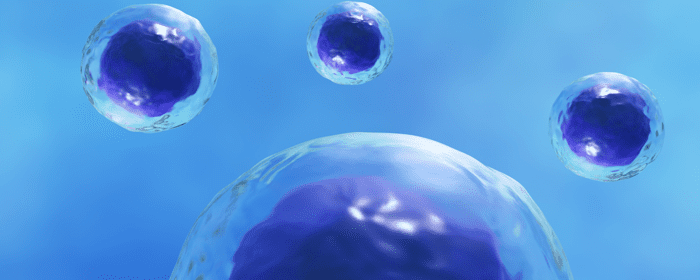

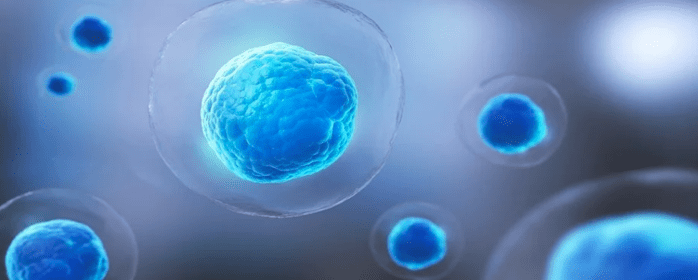
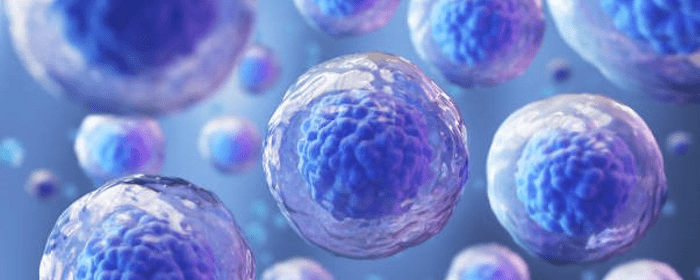
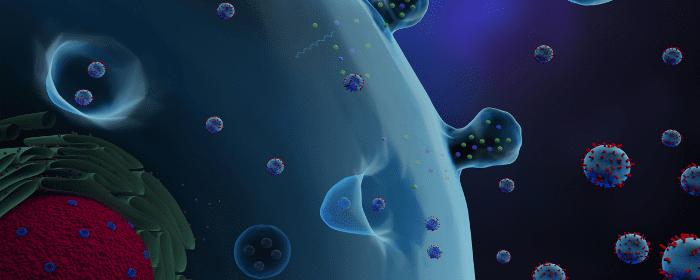
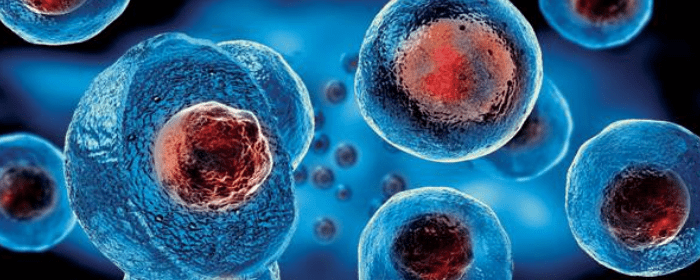
 St. Petersburg, Florida
St. Petersburg, Florida
